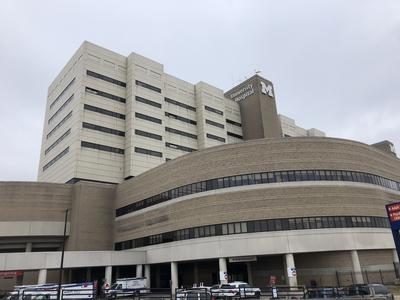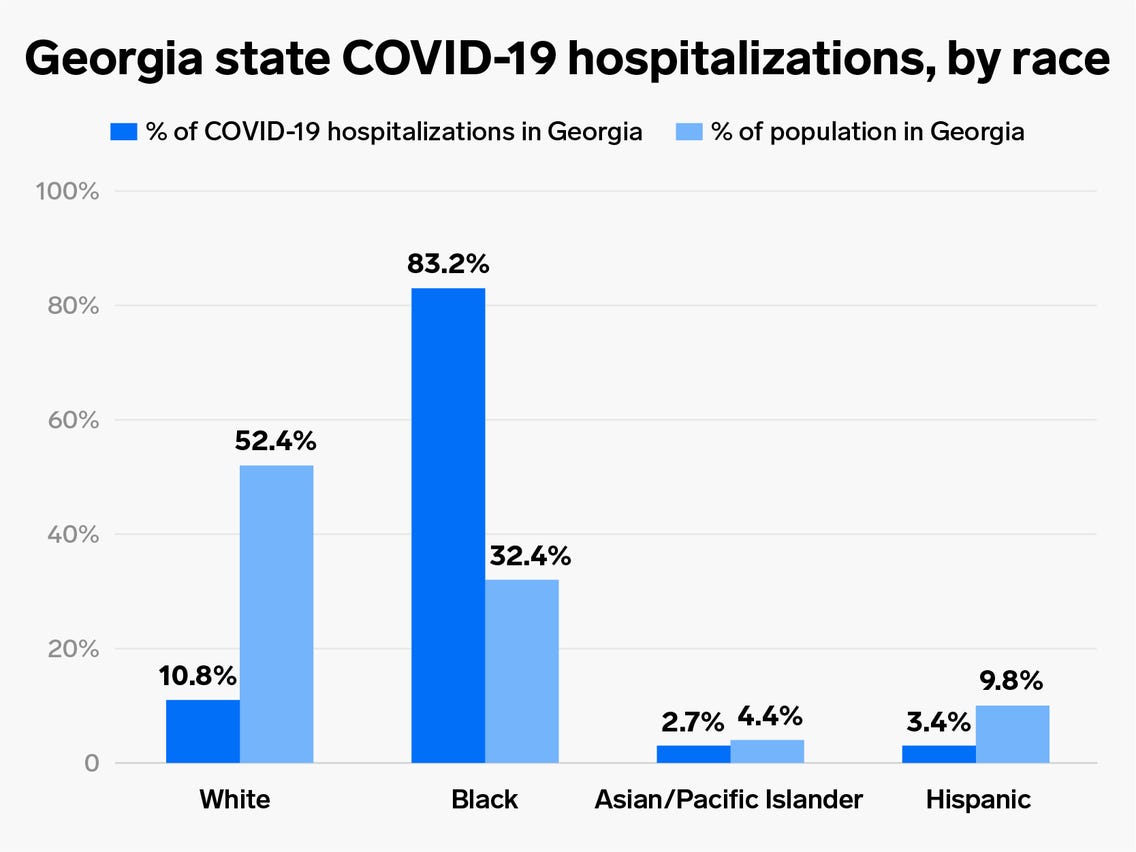Reopening the United States Economy: Myths and Realities
States where restrictions related to COVID-19 pandemic are being lifted experience sharp rises in number of infections and deaths

There are tremendous economic and political pressures emanating from the White House and the corporate community to “reopen” the United States economy.
At present the U.S. has outstripped all other countries in the world in the number of COVID-19 infections and deaths.
As of May 6, 1,171,510 people have been confirmed with the virus while 68,279 of this number lost their lives to the disease. On the international scale, there are 3,588,773 cases and 247,503 deaths spanning 215 countries, areas and territories. (see this and this)
In large municipalities such as New York City, Chicago, New Orleans, Los Angeles and Detroit, where the rapid spread of the pandemic alarmed the world during March and April, it appears as if the number of infections and deaths are declining. Governors and mayors of these states and cites enacted shelter-in-place orders and public emergencies minimizing the concentrations of people on the streets, in schools, businesses, religious institutions and workplaces.
Dallas shoppers amid COVID-19 pandemic
Nonetheless, people are still contracting the virus resulting in hospitalizations and deaths. Healthcare systems are overwhelmed in part due to the lack of personal protective equipment (PPE), high infection rates among medical professionals and support staff along with the economic toll taken on the systems which are controlled by private interests.
The state of Michigan and the city of Detroit are considered “hot spots” in the pandemic where rates of infection and deaths have been some of the highest in the nation and the world. Michigan has confirmed 43,950 cases of COVID-19 resulting in 4,135 deaths. Detroit, the largest city in the state, leads in the number of infections with 9,424 and 1,108 fatalities. (see this)
Some of the highly-rated hospitals in the state of Michigan are laying-off employees. The most recent is the University of Michigan in Ann Arbor.
Michigan Medicine, which administers the University Hospital, announced on May 5 that there would be 1,400 employees furloughed or laid off. This announcement comes at a time when the demands for quality healthcare services for COVID-19 patients and others requiring treatment for a host of ailments remains at historical levels.
The suspension of elective surgeries, annual physical examinations, lab work on patients for various reasons have had a tremendous impact on the finances of the healthcare systems throughout the U.S. In addition, many people within the U.S. are not covered by private medical insurance programs. Others have inadequate healthcare coverage which does not pay for the total costs emergency care and long term hospital confinements.
Moreover, many people in the state of Michigan and other regions of the U.S. have lost their jobs with an estimated figure of 30 million nationally. In Michigan, it is being said that more than a million people are out of work since the advent of the pandemic and the declaration of emergency orders since mid-March. Service sector jobs where a significant portion of growth within the labor market has occurred in the hospitality and restaurant sectors, the rising rates of unemployment, lack of public trust due to widespread infections and the decline in disposal income, will create the conditions for the dissolution of many of these businesses and institutions.
With specific reference to the situation involving Michigan Medicine, Marschall Runge, CEO for the hospital and dean of the medical school, said of decisions to downsize the workforce:
“While we are faced with continuing challenges as a result of this pandemic, we know that our collective effort will result in our successfully navigating this crisis and moving forward on a path of strength and sustainability. Our economic recovery plan will help us continue to provide hope and healing to our patients and support our clinical, educational and research missions.” (see this)
Texas and Georgia: Reopening and the Spread of the Virus
There have been major political and ideological differences related to the handling of the COVID-19 pandemic. The Republican and Democratic parties are both controlled by Wall Street and the leading industrial interests in the U.S. and globally. Any notion of a party platform independent of the banks and the Pentagon are off limits to the leadership of the Democrats and the Republicans within and outside of government.
Georgia graph on hospitalizations based on race
Nonetheless, the two ruling class parties embody varying positions on policy issues which are being implemented in states throughout the country. States such as New York, New Jersey, Illinois, Michigan, California, Washington, among others, are maintaining rigid stay-at-home mandates which are serving to reduce infection rates and deaths. These variations in views on the response to the pandemic are based upon the divergent constituencies embodied with each separate political party. African Americans, people of Latin American descent, other people of color communities, tend to vote Democratic in local, statewide, congressional and presidential elections.
Southern and certain Midwestern states have been reluctant to impose similar measures and are the first to “reopen” in the beginning of May. These contradictory responses to mitigation efforts aimed at stemming the impact of the virus will only prolong the current outbreak.
These inconsistent policies are taking a serious toll on public health nationally. In the state of Texas, a recent report noted that infection rates are starting to rise in parallel with the purported relaxing of Center for Disease Control and Prevention (CDC) guidelines by the Governor.
A May 2 article in Newsweek stressed that:
“As the novel coronavirus outbreak continues in the U.S., Texas has reported its second, third and fourth highest daily spikes in cases since the outbreak began, within two days of the state easing lockdown measures on May 1. On May 2, Texas reported 1,293 new cases, the second-highest count of new cases, and 1,026 new infections on May 3, the fourth-highest number of new cases since early March in the wake of the outbreak. May 1 marked the third-highest figure on record, with 1,142 new cases, according to the latest report Monday from Texas state health authorities. Texas also recorded its highest daily death toll of 50 fatalities on April 30, just a day before the state’s reopening, Texas health authorities report. The state has reported at least 32,332 cases, including 884 deaths, while around 16,000 have reportedly recovered from infection and at least 1,533 are currently reported to be in hospital, as of Monday.”
Political groupings in support of the re-election of President Donald Trump are apparently in full agreement with the relaxation of COVID-19 preventative guidelines even those issued by the White House itself. Demonstrations advocating this position calling for a “reopening of the country” are echoed and praised in the White House COVID-19 Task Force briefings, previously held on a daily basis.
This division within political forces in the U.S. portends much for the future of public health and the national economy. Unless these contradictions can be resolved based upon scientific methodologies combined with the social interests of the majority of people in the country, the return to any sense of “normality” will remain elusive.
Another Southern state, Georgia, where an election during November 2018 further exposed the continuing phenomenon of voter suppression, national oppression and institutional racism, an outbreak among the African American population in the Southwest region of the state reveals the ongoing threat of COVID-19. The areas surrounding Albany, a hallmark of the 1960s Civil Rights Movement, today is representative of the disproportionate impact of the pandemic on the oppressed people.
Governor Brian Kemp, who benefitted from the voter suppression of many African Americans during the 2018 election, has remained committed to the “reopening” despite the opposition from Atlanta Mayor Keisha Lance Bottoms and former Democratic House of Representative minority leader Stacey Y. Abrams, the candidate which ran against Kemp. Many businesses in Atlanta are refusing to reopen due to the impact of the virus on the city’s African American community.
A report in the Associated Press on May 6 noted in relationship to the heavily rural Southwest region of the state of Georgia that:
“The [local Phoebe Putney Memorial] hospital saw its first known coronavirus patient on March 10; within a few days, it had 60 and the ICU was full. Two weeks later, patients began flooding in from farther-flung rural communities. Helicopters buzzed from the top of the parking garage, flying patients to other hospitals that still had room to take them. They burned through six months of masks and gowns in six days, said Phoebe Putney president Scott Steiner. Then they were competing for supplies against wealthier, more politically powerful places; they paid $1 each for surgical masks that typically cost a nickel and were losing about $1 million each day. The patients were very sick. Some died within hours. Some died on the way, in the back of ambulances. The region is predominantly black, but still African Americans died disproportionately, Steiner said. African Americans accounted for about 80% of the hospital’s deaths.” (see this)
Even those who presumed that the threat of COVID-19 was mainly centered in the densely populated urban areas composed of many people of color communities should realize now that the virus is a threat to various regions of the U.S. If the ruling class and capitalist state does not develop an effective healthcare program to effectively address the pandemic the impact of the disease will further damage human society domestically and internationally.
Healthcare, the Economy and the Crisis of Capitalism
These social conditions related to the spread of COVID-19 are exacerbating the underlying problems related to poverty, worker exploitation and national oppression. The reason why the disease is having such a devastating impact on African Americans and other oppressed groups is clearly related to the character of the capitalist system in the U.S. which prioritizes profit-making over and above public health.
Environmental and structural crises prevailing in major urban areas have been lingering for decades. The failure of the current economic system to put in place safeguards against the disastrous consequences of the displacement of millions in the previous decade and the enhancement of the exploitation of labor, has left the majority within the U.S. endangered by public health emergencies compounded by economic uncertainty.
The present situation has exposed the capitalist system as being without any possible solutions to the present conjuncture. Socialism and its policies which guarantee annual minimal incomes, universal healthcare, housing, education and environmental security, is the only way forward within the U.S. and indeed the world.
*
Note to readers: please click the share buttons above or below. Forward this article to your email lists. Crosspost on your blog site, internet forums. etc.
Abayomi Azikiwe is the editor of Pan-African News Wire. He is a frequent contributor to Global Research.
All images in this article are from the author unless otherwise stated



